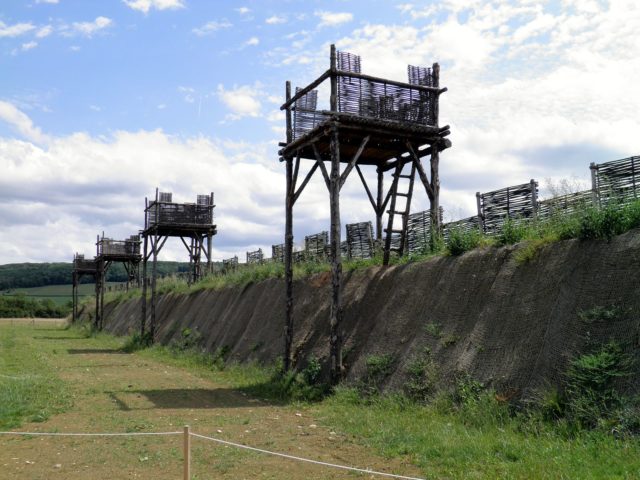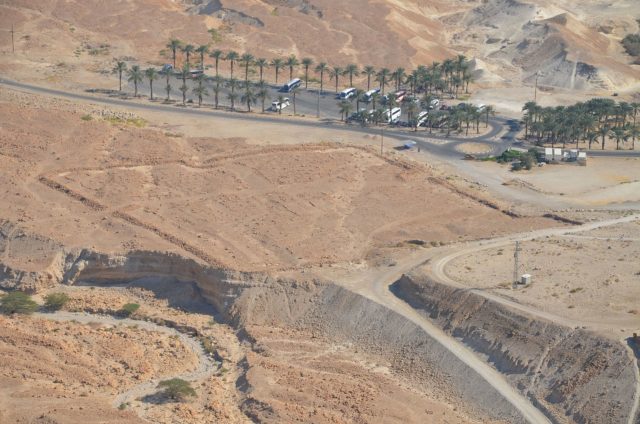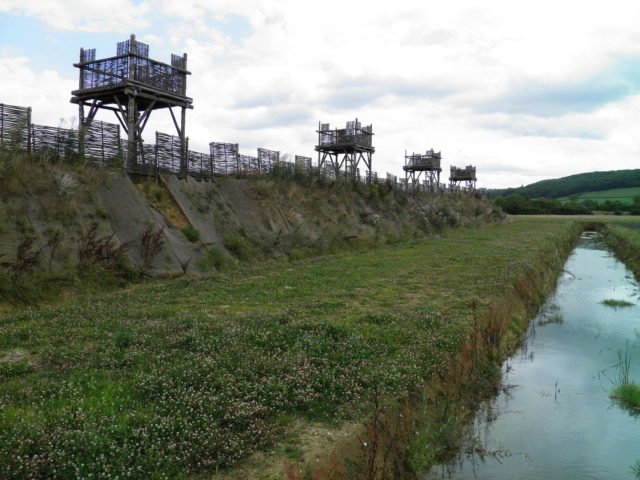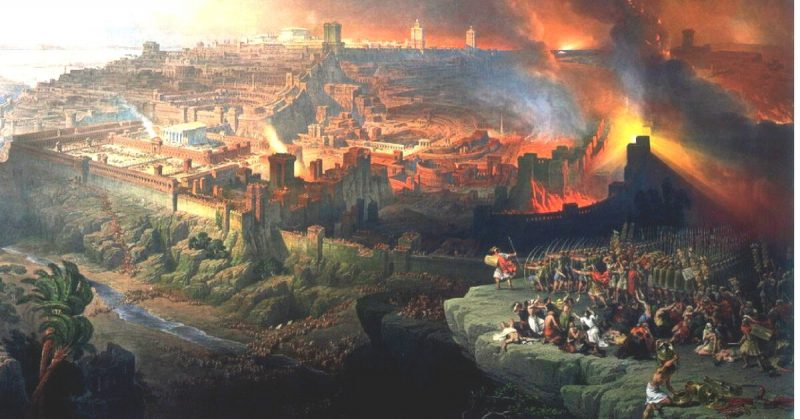Of all the armies of the ancient world, the Romans did the most spectacular job of combining military might with engineering skill. This was repeatedly demonstrated in the forts, ramps, and assault devices they constructed when besieging a town or fort. The most impressive of all these tools was circumvallation.
What Was Circumvallation?

Circumvallation was the Roman practice of surrounding a settlement with a ring of defensive siege works. Unlike the blockade camp, its predecessor and easier alternative, circumvallation created a complete encirclement, giving those surrounded no way in or out.
Such a system had distinct advantages. Those besieged could only escape by breaking through the Roman lines so they would have to fight even to send out a message for help. No supplies could leave or enter. No reinforcements could be brought in. Scouts could not sneak around the Roman lines to assess their deployment and look for weaknesses.
Circumvallation was a complex undertaking, one which took not only the Romans’ famed engineering skills but also a lot of resources.
There are reports the Romans used circumvallation against cities near them as early as the 7th and 5th centuries BC. However, these accounts are isolated and potentially unreliable. Written long after the events in question, they may reflect later writers projecting practices of their time back into the past.
Circumvallation began to come into its own in the 3rd century BC when the Romans were grappling with the Carthaginians for domination of the Mediterranean.
The first reliably recorded and truly successful use of circumvallation came in 212-211 BC with the siege of Capua. In an enormous building effort, a double ring of ditches and ramparts was constructed around the town. One ring faced inward, containing the besieged Capuans. The other faced out, fending off the threat of Carthaginian forces under Hannibal. Both were equipped with defensive platforms as town walls would have been, making them strong defensive positions.
A similar system had been used at Syracuse (212-214 BC) but was abandoned in the face of a Carthaginian field army. At Capua, the attacking army was held back. The value of circumvallation had been proven.
The growth of the empire and increasing use of circumvallation were tied together. Circumvallation helped in capturing a territory, and it was the resources available from that territory which allowed it to continue to be used.
In the early days of Rome’s conquests, circumvallation could be used against cities near the capital, as resources could quickly be supplied to the siege lines. This had not been practical at greater distances. Now, with more territory under Roman control and more troops, sufficient resources and manpower could be channeled wherever they were needed.
A Fort around a Fort

Though the defining reason for these works was surrounding the enemy position, other features were important.
Of foremost importance was the double layering of the siege system. Technically, circumvallation refers to the outer facing barriers, while contravallation relates to those facing inward. The presence of the outer barrier was vital to the success of the works as it held back relief forces. The Romans sometimes found themselves fighting a siege within a siege; holding off one army while another held them off. Such strong double defenses meant they avoided being driven away once in position.
These barriers usually consisted of a rampart topped with a palisade and with a ditch in front of it, as at Numantia (134-133 BC). On other occasions, such as Athens (87-86 BC), the hard work of raising the rampart was left out in favor of a simple ditch or a ditch and palisade.
Raised positions, turrets from which artillery could fire, were often included in these lines. This allowed artillery to be used as both an offensive and a defensive weapon. They could fire over the siege works both at the defenders and at any relief force that arrived.
Fortified camps were built into the siege lines, providing garrison positions for the troops to live in and a base from which to emerge if the enemy attacked. There was usually one large camp, often accompanied by several smaller ones. These barrack positions, scattered along the line, allowed troops to be quickly deployed to wherever the defenders attacked. This was an especially important consideration in large siege works. As a result, we see several forts in siege works such as those at Masada (73-74 AD).
Alesia

The most famous and impressive system of circumvallation was that created by Julius Caesar while besieging the Gauls at Alesia (52 BC). Caesar faced an impressive Gallic garrison in a secure hilltop position that could not be easily taken by force. He knew a large Gallic army was gathering to attack him and relieve Alesia. The success of his campaign and therefore his career hung on this battle. As always, he rose to the occasion.
Contrary to accounts made at the time, the siege constructed at Alesia was not uniform in layout. Labour was saved by building lesser works in some areas, such as on the higher ground, that could more easily be defended. They may have looked equally impressive to the Gauls in Alesia.
The strongest sections of the line were incredible works of engineering.
Similar lines of defense faced both in and out. Any Gauls attempting to reach the Romans would first have to cross two ditches. Then there was a field of stimuli, short buried stakes with protruding iron spikes. Then an area of cippi, branches fastened together and set in a trench. Their sharpened ends projected out of the ground to create an entanglement similar to present day barbed wire. After this came a third ditch and then a rampart topped with a palisade and towers. All of this had to be crossed while under fire from men in the towers and artillery on platforms along the line.
The circumvallation at Alesia was the peak of a technique that would go into decline as the empire’s growth slowed, stalled, and eventually retreated over later centuries. It showed how much Roman military engineers could achieve, and how difficult it was for any opponent to face them.
Sources:
Gwyn Davies (2006), Roman Siege Works.
